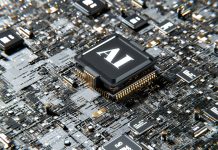SoftBank has sold a $5.8bn stake in Nvidia, taking profits from one of the most successful technology investments of the past decade as it prepares to channel fresh capital into the next phase of artificial intelligence. The move signals a strategic recalibration under Masayoshi Son, who has been steadily reshaping the group from a sprawling technology investor into a sharper, more AI-focused holding structure.
The timing reflects both opportunity and necessity. Nvidia’s value has soared alongside the AI hardware boom, turning early backers into some of the most profitable investors of the era. For SoftBank, however, the sale is not an exit from the sector but the repositioning of capital for the longer strategic contest ahead.
Harvesting Gains After a Historic Rally
Nvidia’s meteoric rise has been one of the defining market stories of the past 24 months. As demand for AI computing power has intensified, the company has become the dominant supplier of chips required to train and run large-scale neural networks. The market has rewarded that dominance aggressively, pushing Nvidia’s valuation into the upper tier of global corporates.
SoftBank was well placed to benefit. The group originally acquired Nvidia exposure through its ownership of semiconductor designer Arm, whose architecture underpins much of the modern computing stack. Although SoftBank’s holdings have shifted over time, it remained one of the meaningful beneficiaries of Nvidia’s ascent.
Taking profits now allows SoftBank to bank a material gain at a moment when capital deployment decisions carry increasing strategic weight. While the rally in AI-linked equities has been powerful, Son’s view has been more focused on where the next structural bottlenecks and breakthroughs will emerge — particularly in compute infrastructure, frontier model training and AI-native business applications.
A War Chest for the Next Phase of AI
SoftBank has been vocal about its ambition to become a foundational force in the AI economy. Son has described the company’s future as a bet on “artificial superintelligence” and has signalled that the group will deploy capital into the entire AI value chain — from chips and data centres to software, robotics and autonomous systems.
The proceeds from the Nvidia sale are expected to strengthen SoftBank’s investment capacity. After years of losses in the Vision Fund portfolios, driven by mis-timed growth investments and market repricing, SoftBank has been conscious of rebuilding balance sheet flexibility. The sale contributes to that process and provides liquidity at a moment when the group is preparing to undertake larger, more concentrated positions.
A central question for investors is whether SoftBank intends to consolidate around ARM as its flagship asset, positioning it as the anchor around which new AI infrastructure plays are built. ARM’s technology is ubiquitous, but its strategic leverage in the AI era is still being defined: efficiency, specialised compute architectures and energy-conscious data centre design are all areas expected to reshape competition in the coming decade.
Navigating Risk in a Changing Market
SoftBank’s shift is also reflective of broader market conditions. The AI investment landscape is entering a more selective phase. Early enthusiasm has given way to questions about scalability, capital intensity and the shape of future demand. Models are expensive to train, data centre construction is constrained by energy and permitting limitations, and competition among model developers is escalating.
By reallocating capital now, SoftBank is moving ahead of the next cycle, rather than reacting to it. The sale is not a retreat from AI, but a recognition that the highest returns may not come from the most obvious early winners. Instead, SoftBank appears to be positioning itself to own parts of the architecture that will underpin AI adoption at scale.
A Strategic Reset, Not a Step Back
SoftBank’s identity has always been tied to long-horizon bets. The Nvidia sale is consistent with that pattern: harvest gains at a moment of market strength, rebuild capacity, and redeploy into the next structural frontier.
The group is not leaving the AI race. It is paying for its next move.
The question now is where Masayoshi Son directs that capital — and whether SoftBank can again shape the future of the industry rather than merely invest in it.






































